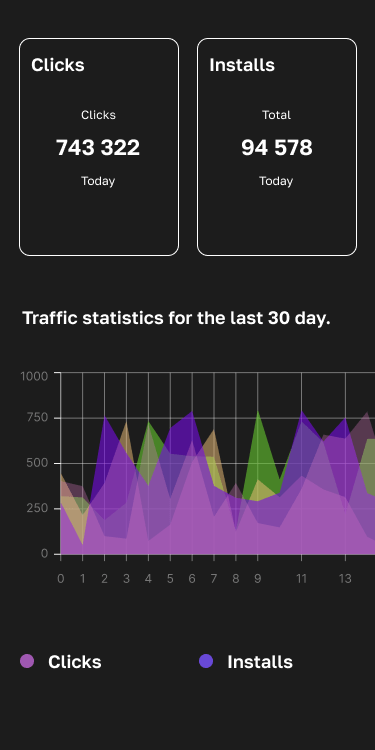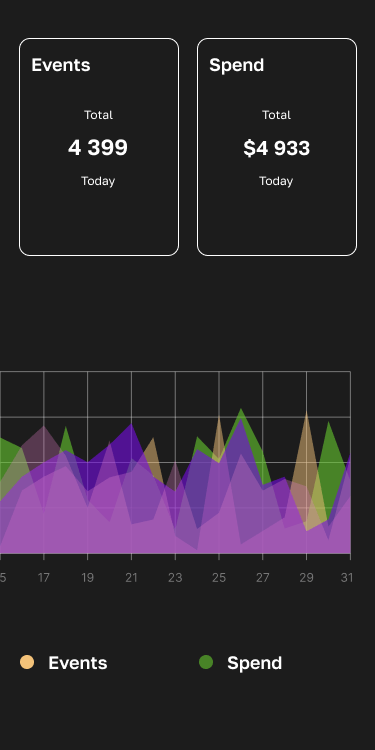On-device ad networks from Android handset makers have grown up fast. Their consoles now offer two algorithmic bidding styles that mirror—but subtly improve on—what Meta or TikTok provide: Cost Cap and Event Cap. Knowing when to use each can spell the difference between cheap downloads that never open and sustainable ROAS.
1 | Cost Cap—volume with a safety net
A Cost Cap campaign tells the platform, “spend freely, so long as my average cost per install (or per registration) stays at or below X.” Xiaomi’s Mi Ads exposes this through its standard “Target CPI/CPA” setting; the bid is automatically raised or lowered to keep the rolling average under your ceiling.
Case: social app on Redmi devices (India)
- Target CPI set at $0.18
- After one week the cap was nudged to $0.23 to unlock more auctions
- Impressions +63 %, installs +57 %, CPI held inside the limit for the entire sprint while daily spend doubled
Take-away: Cost Cap is perfect when budgets are tight, you need predictable averages, or you’re still mapping the funnel in a new market.
2 | Event Cap—paying for what happens after install
Event Cap flips the brief: instead of guarding the install price, you ask the algorithm to maximise a post-install goal (day-1 retention, tutorial completion, first purchase) and promise to pay only up to a set cost per event or above a target rate.
Xiaomi Mi Ads: Day-1 retention bidding
A separate optimisation goal lets you feed back retention logs; the system bids harder where it believes your 24-hour stickiness target can be beaten. Xiaomi recommends tweaking the target in 5 % steps to avoid resetting the learning phase.
Transsion Eagllwin: oCPD
Transsion — the maker of Tecno and Infinix phones dominating Africa — offers optimised Cost-per-Download (oCPD). The algorithm prices each install against the likelihood of early-stage events such as tutorial completion or level 2 start, not the raw CPI.
Case: casual game on Tecno Spark (Nigeria)
- Flat CPI test: $0.10, 60 k installs, day-7 retention 12 %
- oCPD test (cap $0.30 per tutorial finish): 48 k installs, day-7 retention 22 %, ROAS +50 % despite lower volume
Event Cap shines once you have reliable in-app signals and care more about lifetime value than raw reach.
3 | Head-to-head numbers
| Metric | Cost Cap (CPI $0.23) | Event Cap (D1 ret. ≥ 35 %) |
| Avg. CPI | $0.22 | $0.27 |
| Day-1 retention | 28 % | 36 % |
| 30-day ROAS | 112 % | 146 % |
A minor jump in install price was more than offset by deeper engagement, pushing revenue up 30 %.
4 | Which lever when?
| Your immediate goal | Suggested model | Rationale |
| Keep CPIs inside a strict budget | Cost Cap | Stable averages, fast delivery |
| Hit payback windows or LTV targets | Event Cap | Bids float toward high-quality users |
| Launching in a brand-new region | Start Cost Cap → shift to Event Cap | Build base data, then optimise depth |
5 | Getting started in four steps
- Instrument events. Pass retention, purchase or level-complete data back to the OEM console through your MMP.
- Benchmark truthfully. Set caps a touch above your blended historical cost per event; too low starves delivery.
- Feed the algorithm. Aim for 50+ target events per ad set each week to keep models learning.
- Iterate weekly. If volume stalls, widen device tiers or relax your cap by 10–15 %.
Bottom line
OEM ads are no longer just a bargain-bin install source. Cost Cap guards spend like a thermostat; Event Cap hunts for genuine value. Master both and you’ll turn handset-native traffic from an experimental line item into the profit engine of your 2025 growth plan.










